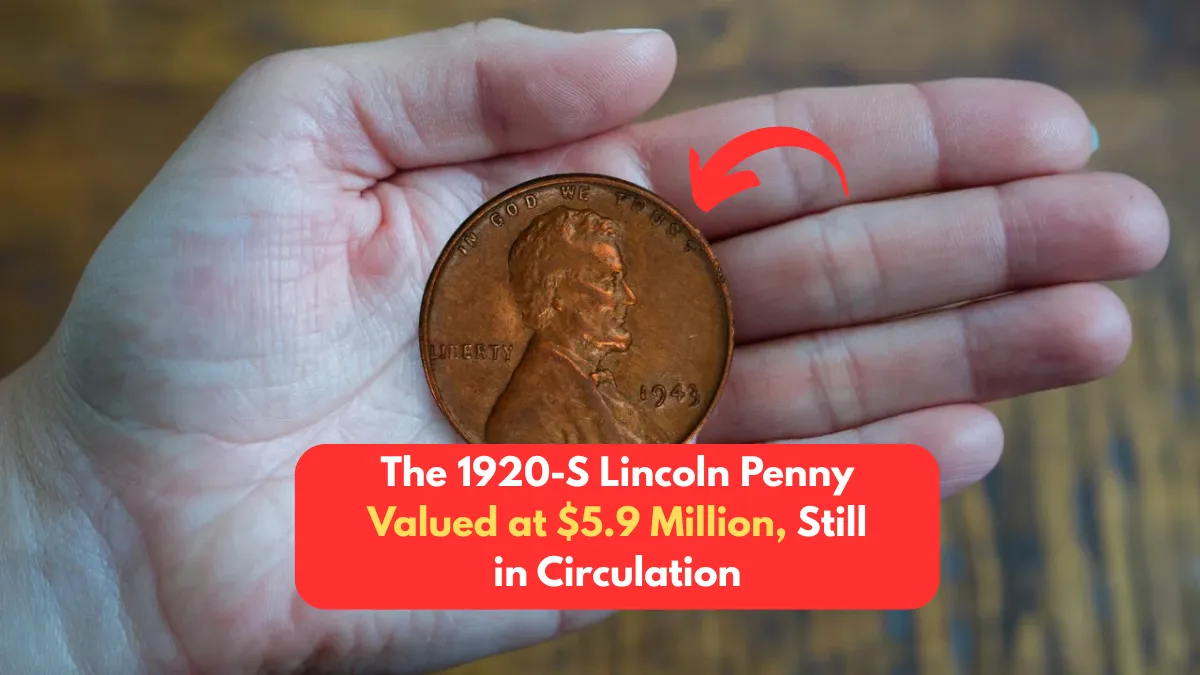Everyday pocket change might seem like nothing more than a collection of coins with minor value, but what if one of them could change your life forever? Among the many numismatic treasures still circulating in the United States, few spark as much intrigue as the 1920-S Lincoln penny—a rare coin with a staggering estimated value of $5.9 million. Yes, you read that right. This copper coin, smaller than a quarter and lighter than a nickel, could be worth a small fortune.
But how can a penny reach such a jaw-dropping valuation? And how is it possible that one of these might still be floating around in someone’s coin jar or pocket? Let’s dive into the rich history, rarity, and reasons behind the incredible worth of the elusive 1920-S Lincoln cent.
The Origins of the 1920-S Lincoln Penny
The Lincoln cent was introduced in 1909 to commemorate the 100th anniversary of President Abraham Lincoln’s birth. Designed by Victor David Brenner, the penny replaced the Indian Head cent and became the first U.S. coin to feature a real person’s portrait.
The 1920-S Lincoln penny was minted in San Francisco, denoted by the small “S” mintmark below the date on the obverse side of the coin. That year, the San Francisco Mint produced 46,220,000 Lincoln cents, which sounds like a large number. However, in the world of numismatics, not all pennies are created equal.
Why the 1920-S Is So Rare
Despite the relatively high mintage, very few 1920-S Lincoln pennies have survived in high-grade or uncirculated condition. Most entered circulation and were worn down through daily use over the decades. Several key factors contribute to its rarity and value:
1. Quality of Minting
The San Francisco Mint in the early 20th century was notorious for inconsistent striking quality. Many 1920-S pennies were weakly struck, resulting in poor detail and making high-quality examples extremely rare.
2. Low Survival Rate
While millions were minted, few were saved by collectors in the year of issue. Most circulated for decades, and many were lost or damaged. Today, finding a 1920-S penny in mint state (MS-65 or higher) is exceedingly difficult.
3. Historical Appeal
Collectors highly value coins from the early years of the Lincoln cent series. The 1920-S also represents a time of transition in the U.S., just after World War I and during a shifting economic climate, adding historical interest.
The $5.9 Million Penny: What Makes It Special?
While most 1920-S pennies in circulated condition are worth $20 to $200, the handful in pristine, uncirculated condition fetch much higher prices at auction. But one 1920-S penny, in particular, made headlines when it was certified in MS-67+ Red (RD) condition by a top grading service.
What’s so special about that one coin?
- Flawless Preservation: The coin showed full detail, bright red copper color (indicating it hadn’t oxidized), and no visible wear or handling damage.
- Unique Pedigree: This coin had a well-documented history, having passed through the hands of several elite collectors.
- Auction Frenzy: Bidding wars at major coin auctions can skyrocket when a unicorn like this appears. The final hammer price? $5.9 million, sold privately to an anonymous buyer.
Is the 1920-S Still in Circulation?
The idea that a $5.9 million penny could be “still in circulation” might sound like a myth, but it’s not entirely far-fetched. Unlike modern coins with limited appeal, older pennies often go unnoticed by the average person. Many 1920-S pennies have been mistaken for ordinary coins and passed along in transactions, coin jars, or inherited collections.
Even though high-grade examples are nearly impossible to find in change, lower-grade 1920-S Lincoln cents do occasionally surface in coin rolls, flea markets, estate sales, and old piggy banks.
So, yes—it is technically still “in circulation,” meaning it hasn’t been officially removed from legal tender or collected out of existence.
How to Spot a 1920-S Lincoln Penny
Want to check your coin jar for this potential million-dollar marvel? Here’s what to look for:
- Obverse (Front): Features Abraham Lincoln’s bust facing right. The date “1920” will be on the right side, under “IN GOD WE TRUST.”
- Mintmark: A small “S” mintmark below the date indicates San Francisco.
- Reverse (Back): Two wheat stalks flank the words “ONE CENT” and “UNITED STATES OF AMERICA” (also known as the Wheat Cent design).
- Condition: Sharp details, red copper tone, and lack of wear boost its value exponentially.
What to Do If You Think You Found One
Think you’ve struck copper gold? Here’s what you should do:
- Don’t Clean It – Cleaning a rare coin can destroy its value instantly.
- Examine Carefully – Use a magnifier and compare it with reference photos online or in coin guides.
- Get It Graded – Submit the coin to a reputable grading service like PCGS or NGC for authentication and professional evaluation.
- Consult a Dealer or Auction House – A professional numismatist can help you sell or appraise it properly.
Final Thoughts: Treasure Hiding in Plain Sight
The 1920-S Lincoln penny serves as a thrilling reminder that hidden treasures could be sitting in our pockets or collecting dust in a forgotten drawer. Whether you’re a seasoned coin collector or just someone with a keen eye for details, there’s always a chance you might find a million-dollar penny.
So the next time you’re handed some change at the store, take a second look. That humble penny might just be the ticket to your financial breakthrough.
